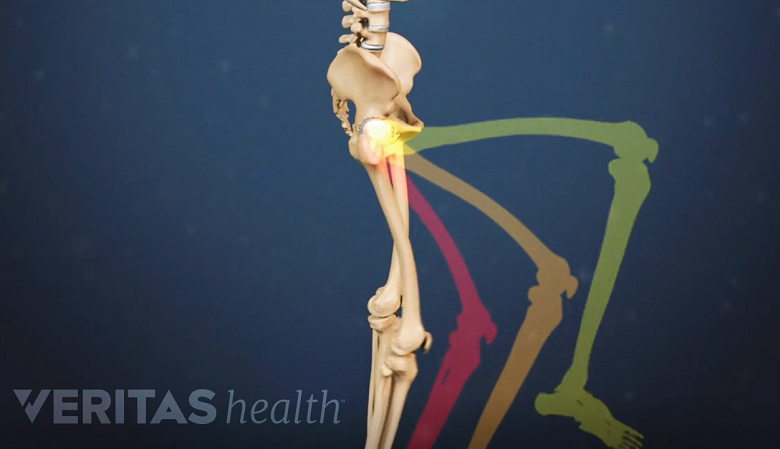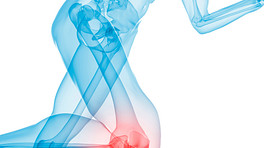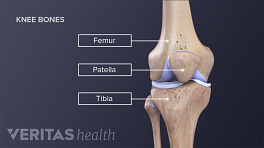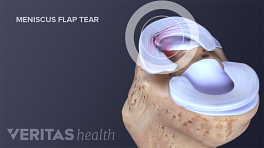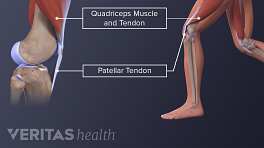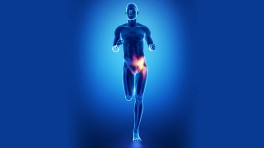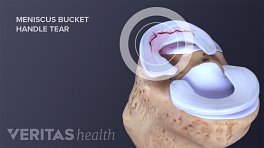Pain is the first and most noticeable symptom of iliotibial (IT) band syndrome. The pain typically occurs at the outside of the knee during repetitive motions, such as running or cycling.
See Common Running Injuries: Knee Pain
Tenderness, joint tightness, and other symptoms are also possible. The symptoms usually appear gradually and, without rest or treatment, get worse over time.
Recognizing the specific features and patterns of these symptoms, such as the exact location of the pain and what makes it better or worse, helps a doctor make an accurate diagnosis.
In This Article:
- Iliotibial Band Syndrome
- IT Band Syndrome Symptoms
- IT Band Syndrome Causes and Risk Factors
- IT Band Syndrome Diagnosis
- IT Band Syndrome Treatment
Knee Pain and Other Symptoms
In addition to knee pain, IT band syndrome can also cause stiffness in the hip joint.
Pain is felt at the outside (lateral side) of the knee joint, near the rounded end of the femur (thighbone). This part of the femur is called the lateral femoral epicondyle, or just the femoral condyle. The pain may be limited to this area or radiate up the IT band, possibly causing pain in the thigh and hip. 1 Pegrum J, Self A, Hall N. Iliotibial band syndrome. BMJ. 2019;364:l980. doi:10.1136/bmj.l980
- Knee pain with exercise. In the early stages of IT band syndrome, knee pain begins after a workout has started. 1 Pegrum J, Self A, Hall N. Iliotibial band syndrome. BMJ. 2019;364:l980. doi:10.1136/bmj.l980 For example, knee pain might appear after cycling for 15 minutes.
- Pain that goes away with rest. Pain typically goes away when the irritating activity stops, especially when the condition is mild. For example, knee pain may be felt while jogging and stop when walking. If the condition gets worse, the pain will be more severe and felt even during walking or rest.
- Sharp pain develops over time. In the early stages of iliotibial band syndrome, knee pain may be dull. Over time, though, this pain might get worse and feel sharp. 2 Khaund R, Flynn SH. Iliotibial Band Syndrome: A Common Source of Knee Pain. afp. 2005;71(8):1545-1550. Accessed September 22, 2023. https://www.aafp.org/pubs/afp/issues/2005/0415/p1545.html
- Knee pain when running downhill. Running downhill puts extra strain on certain muscles at the front of the thigh, including the tensor fasciae latae. This muscle pulls on the IT band when it contracts, worsening IT band irritation. 1 Pegrum J, Self A, Hall N. Iliotibial band syndrome. BMJ. 2019;364:l980. doi:10.1136/bmj.l980
- Knee pain going down stairs. Just like running downhill, going down stairs can make knee pain worse. This pain tends to be a sign of moderate to severe iliotibial band syndrome. 3 Hutchinson LA, Lichtwark GA, Willy RW, Kelly LA. The Iliotibial Band: A Complex Structure with Versatile Functions. Sports Med. 2022;52(5):995-1008. doi:10.1007/s40279-021-01634-3
- Pain when bending the knee. IT band syndrome pain is usually most noticeable when the knee is bent at about 30°. Bending the knee to this angle causes the IT band to slide over the knobby end of the thighbone, possibly leading to friction and irritation. 1 Pegrum J, Self A, Hall N. Iliotibial band syndrome. BMJ. 2019;364:l980. doi:10.1136/bmj.l980 , 4 Fairclough J, Hayashi K, Toumi H, et al. The functional anatomy of the iliotibial band during flexion and extension of the knee: implications for understanding iliotibial band syndrome. J Anat. 2006;208(3):309-316. doi: 10.1111/j.1469-7580.2006.00531.x
- Pain affected by form and gait. IT band syndrome is influenced by body mechanics. This means pain during activity might get better or worse when form or gait changes. For example, some people who feel pain when jogging do not feel pain when taking longer strides and running full speed. 1 Pegrum J, Self A, Hall N. Iliotibial band syndrome. BMJ. 2019;364:l980. doi:10.1136/bmj.l980
- Tenderness at the outside knee. Pressing on the outside of the knee will usually cause discomfort, similar to pushing on a bruise. The tender spot will be 2 cm to 3 cm above the joint line, where the femur meets the tibia. Tenderness at the joint line itself might be a sign of a meniscus tear. 1 Pegrum J, Self A, Hall N. Iliotibial band syndrome. BMJ. 2019;364:l980. doi:10.1136/bmj.l980
- Tightness in the IT band. Iliotibial band syndrome occurs with a tight IT band. The outer thigh typically feels taut. Stretches that target the IT band will probably be challenging and feel uncomfortable but are believed to be important to recovery.
- Hip or knee stiffness. The IT band is made of tissue called fascia, and fascia affects joints’ range of motion. 5 Wilke J, Macchi V, De Caro R, Stecco C. Fascia thickness, aging and flexibility: is there an association? J Anat. 2019;234(1):43-49. doi:10.1111/joa.12902 Excess tension in the IT band will cause the hip, knee, or both joints to be less flexible.
- A sensation of snapping at the knee. When the knee bends, the IT band might cause a snapping sensation as it passes over the rounded end of the femur. This symptom is rare. 6 Marchand AJ, Proisy M, Ropars M, Cohen M, Duvauferrier R, Guillin R. Snapping Knee: Imaging Findings With an Emphasis on Dynamic Sonography. American Journal of Roentgenology. 2012;199(1):142-150. doi:10.2214/AJR.11.7817
If these symptoms are present, a sports medicine physician or other qualified healthcare provider can perform an evaluation and provide a diagnosis and treatment plan.
Symptoms that Are Not Caused by IT Band Syndrome
The iliotibial band syndrome rarely causes knee swelling. 1 Pegrum J, Self A, Hall N. Iliotibial band syndrome. BMJ. 2019;364:l980. doi:10.1136/bmj.l980 The IT band is just 2 mm to 3 mm thick where it passes over the knee joint. In people with iliotibial band syndrome, the IT band is thicker, though not by a lot—often less than 1 mm thicker. 7 Agridag Ucpinar B, Bankaoglu M, Eren OT, Erturk SM. Measurement of iliotibial band diameter in iliotibial band friction syndrome and comparison with an asymptomatic population. Acta Radiol. 2021;62(9):1188-1192. doi:10.1177/0284185120958407 Knee swelling suggests a different problem.
- 1 Pegrum J, Self A, Hall N. Iliotibial band syndrome. BMJ. 2019;364:l980. doi:10.1136/bmj.l980
- 2 Khaund R, Flynn SH. Iliotibial Band Syndrome: A Common Source of Knee Pain. afp. 2005;71(8):1545-1550. Accessed September 22, 2023. https://www.aafp.org/pubs/afp/issues/2005/0415/p1545.html
- 3 Hutchinson LA, Lichtwark GA, Willy RW, Kelly LA. The Iliotibial Band: A Complex Structure with Versatile Functions. Sports Med. 2022;52(5):995-1008. doi:10.1007/s40279-021-01634-3
- 4 Fairclough J, Hayashi K, Toumi H, et al. The functional anatomy of the iliotibial band during flexion and extension of the knee: implications for understanding iliotibial band syndrome. J Anat. 2006;208(3):309-316. doi: 10.1111/j.1469-7580.2006.00531.x
- 5 Wilke J, Macchi V, De Caro R, Stecco C. Fascia thickness, aging and flexibility: is there an association? J Anat. 2019;234(1):43-49. doi:10.1111/joa.12902
- 6 Marchand AJ, Proisy M, Ropars M, Cohen M, Duvauferrier R, Guillin R. Snapping Knee: Imaging Findings With an Emphasis on Dynamic Sonography. American Journal of Roentgenology. 2012;199(1):142-150. doi:10.2214/AJR.11.7817
- 7 Agridag Ucpinar B, Bankaoglu M, Eren OT, Erturk SM. Measurement of iliotibial band diameter in iliotibial band friction syndrome and comparison with an asymptomatic population. Acta Radiol. 2021;62(9):1188-1192. doi:10.1177/0284185120958407
